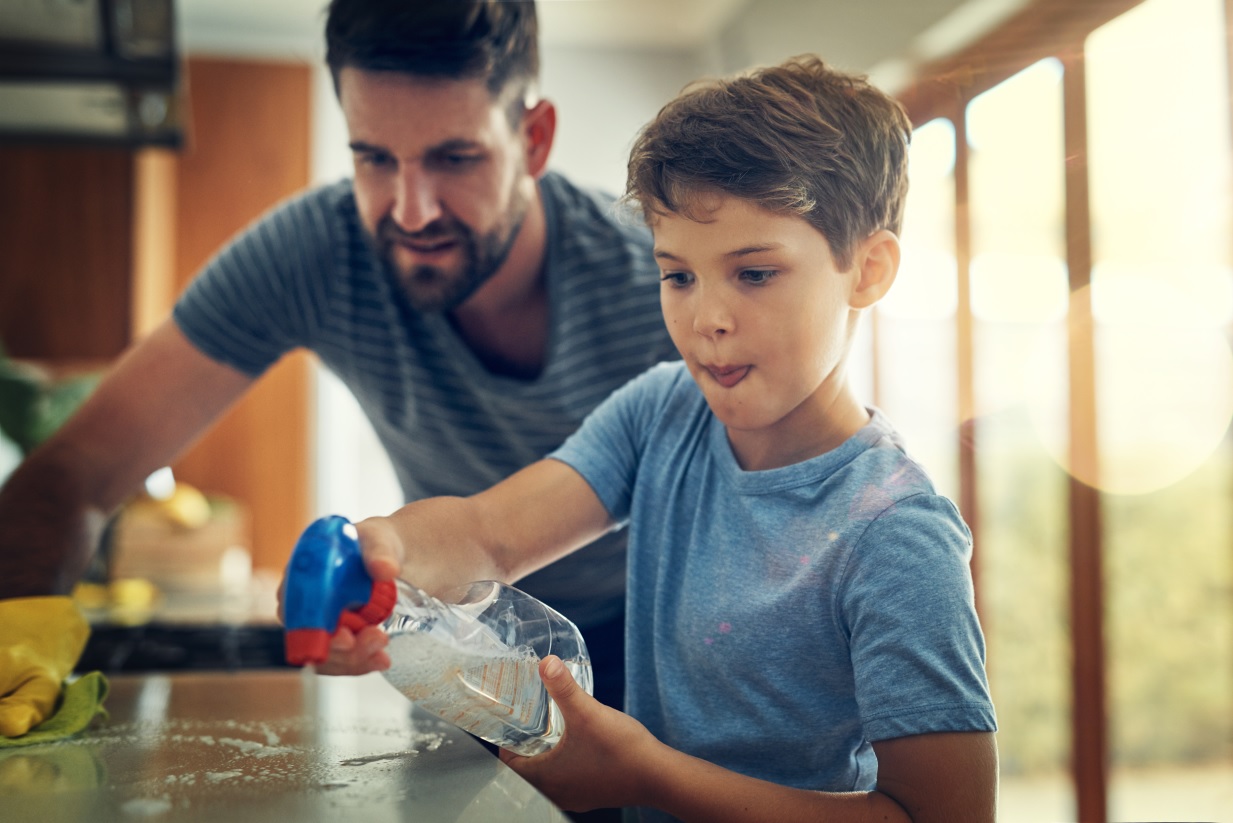Keeping your home clean is essential for a healthy and comfortable living environment. But did you know that you can clean effectively while also being kind to the environment? Green cleaning your home is a way to clean using products and methods that are safe for the environment and your health. It’s about using less waste and more natural products to keep your home clean.
1. Choose Eco-Friendly Cleaning Products
Many traditional cleaning products contain harsh chemicals that can harm the environment and your health. When green cleaning your home, opt for eco-friendly cleaning products that are biodegradable, non-toxic, and free from harmful chemicals. Look for products with labels like “green,” “natural,” or “eco-friendly.” Indeed, many household items can also be used to clean. As you can see, using eco-friendly cleaning products reduces your environmental footprint and minimizes exposure to potentially harmful chemicals.
2. Make Your Own Cleaning Solutions
You can make effective and eco-friendly cleaning solutions using simple ingredients you probably already have at home. For instance, mix equal parts of water and white vinegar for an all-purpose cleaner. Baking soda is excellent for scrubbing surfaces and absorbing odors. Lemon juice can cut through grease and leave a fresh scent. Indeed, homemade cleaning solutions are not only environmentally friendly but also budget-friendly.
3. Ditch Disposable Cleaning Supplies
Disposable cleaning wipes and paper towels may be convenient, but they contribute to unnecessary waste. Instead, use washable and reusable cleaning cloths, microfiber towels, and mop heads. You’ll reduce waste and save money in the long run. As you can see, reducing disposable cleaning supplies helps reduce landfill waste and conserves resources.
4. Conserve Water
When green cleaning, be mindful of water usage. Turn off the tap while scrubbing dishes or cleaning surfaces. Use a bucket when mopping floors instead of letting the tap run. If possible, collect rainwater for outdoor cleaning tasks like washing windows or watering plants. Conserving water is essential for both environmental and cost-saving reasons.
5. Prioritize Ventilation
Proper ventilation is key when using cleaning products. Open windows and doors to allow fresh air to circulate while you clean. This helps dissipate any fumes from cleaning solutions and improves indoor air quality. Also, avoid using air fresheners or the fabric protection sprays because these sprays contain toxins, which can severely affect the reproductive organs (the endocrine system). Indeed, good ventilation reduces indoor air pollution and promotes a healthier living space.
6. Dust and Vacuum Regularly
Dust and allergens can accumulate in your home, affecting indoor air quality. Regular dusting and vacuuming with a HEPA filter can remove these particles, making your home cleaner and healthier. Be sure to have your carpets steam cleaned at least 1-2 times each year. Removing dust and allergens from your home can improve respiratory health and overall well-being.
7. Reduce, Reuse, Recycle
As you clean, be mindful of waste disposal. Recycle containers from cleaning products when possible. Consider donating gently used cleaning supplies to local charities. Properly dispose of any hazardous materials according to your community’s guidelines. Practicing the 3 R’s—Reduce, Reuse, Recycle—reduces waste and supports sustainable living.
8. Clean and Maintain Appliances
Regularly clean and maintain household appliances to ensure they operate efficiently. A well-maintained appliance not only lasts longer but also consumes less energy. Clean refrigerator coils, replace filters, and check for leaks to keep appliances in top shape. Certainly, efficient appliances save energy and reduce your carbon footprint.
9. Mindful Pest Control
Opt for green pest control methods when dealing with unwanted critters. Use natural repellents like mint or citrus for common pests. If necessary, seek out eco-friendly pest control services that use non-toxic solutions. Obviously, green pest control methods are safer for both your family and the environment.
10. Educate Yourself
Stay informed about eco-friendly cleaning practices. Read labels on cleaning products, follow green cleaning blogs, and join online forums or groups dedicated to sustainable cleaning. The more you know, the more effectively you can green clean your home. Continuous learning allows you to make informed choices and adapt your cleaning routines for a greener home.
Conclusion
Green cleaning your home is not only better for the environment but also healthier for you and your family. By choosing eco-friendly products, reducing waste, conserving resources, and adopting green cleaning practices, you can create a cleaner, more sustainable, and eco-conscious living space for all to enjoy.


